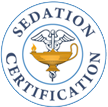https://llr.sc.gov/nurse/ – Nursing Home Page
South Carolina Board of Nursing Review – April 2023
Reviewed by Sedation Certification – January 10, 2024
State Sedation Policy? – Yes
RN’s can give sedation? – Yes
RN’s can give Ketamine? – Low dose yes, in ED or PACU only
Low Dose Ketamine Joint Advisory Opinion Approved.pdf (sc.gov)
ADVISORY OPINION # 25
Formulated: May 18, 1989
Revised: January 2020, January 2018, September 2013, March 2011, July 2007, July 2005, July 2002, November 2001, March 2001, January 2001, July 1993
Reviewed: April 2023, May 2006, July 1998, May 1997, March 1992
Question: Is it within the role and scope of responsibilities of the registered nurse (RN) to administer pharmacological agents intravenously for sedation?
The State Board of Nursing for South Carolina acknowledges that it is within the role and scope of the responsibilities of the RN to administer non-anesthetic medications for minimal/moderate/procedural sedation as ordered by a licensed physician, dentist or Advanced Practice Registered Nurse (APRN).
THIS ADVISORY DOES NOT APPLY TO THE ADMINISTRATION OF AGENTS FOR THE PURPOSE OF ANALGESIA/PAIN MANAGEMENT.
(See joint Ketamine advisory opinion Low Dose Ketamine Joint Advisory Opinion Approved.pdf (sc.gov))
However, RNs who are not qualified anesthesia providers may NOT administer agents that are primarily used as anesthetics for minimal/moderate/procedural sedation, such as, but not limited
to, ketamine, propofol, etomidate, sodium thiopental, and methohexital. Due to new anesthetic/sedation medications and evidence-based changes in current medications, the Board is unable to specifically name every medication that can or cannot be used in certain situations for minimal/moderate/procedural sedation. While every medication cannot be named, if the medication is indicated to be any type of anesthetic agent, the medication must be administered by the Licensed Independent Practitioner or CRNA. (according to the facilities’ vetted drug reference)
For situations requiring the immediate facilitation of airway management (intubation), the RN may administer any intravenous/intraosseous (IV/IO) agents if a qualified provider is immediately present and available if needed to secure the airway. In addition, the Board recognizes in the critical care setting, an RN with specialized education and training, may initiate, titrate, and bolus intravenous sedative agents with the understanding that the airway is secured and mechanically assisted.
The Board recognizes there are multiple levels of sedation as described below:
a. Minimal sedation (anxiolysis)-a drug induced state during which patients respond normally to verbal commands. Although cognitive function and coordination may be impaired, ventilatory and cardiovascular functions remain unaffected.
b. Moderate/procedural sedation (conscious sedation)- a drug induced depression of consciousness during which patients respond purposefully to verbal or light tactile stimulation. No interventions are required to maintain a patent airway and spontaneous ventilation is adequate. Cardiovascular function is usually maintained.
c. Deep sedation-a drug induced depression of consciousness during which patients cannot be easily aroused but respond purposefully following repeated or painful stimulation. Patients may require assistance in maintaining a patent airway and spontaneous ventilation may be inadequate but cardiovascular function is usually maintained.
d. Anesthesia-a drug induced loss of consciousness during which patients are not arousable, even by painful stimulation. The ability to independently maintain ventilatory function is impaired. Patients require assistance in maintaining a patent airway and assistance with ventilation. In addition, cardiovascular function may be impaired.
However, RNs who are not qualified anesthesia providers may not be authorized to manage deep sedation or anesthesia for short-term diagnostic, therapeutic, or surgical procedures no
matter what medications are used.
In order to provide the safest care for the patient receiving moderate/procedural sedation the following conditions must be maintained:
1. The physician must remain at the bedside during and immediately after the administration of the medication as well as throughout the procedure.
2. The RN must monitor the patient for heart rate, blood pressure, respiratory rate, oxygen saturation and end-tidal CO2 (if available) during the administration of the medication, throughout the procedure and post procedure until the patient returns to pre-procedure state of awareness.
3. Resuscitation equipment must be readily available. The Board does recommend that the health care facilities have in place an educational credentialing mechanism which includes a process for evaluation and documenting the individual RN’s competency relative to the management of the patient receiving intravenous IV/IO sedation. This includes, but is not limited to, Basic Life Support (BLS), monitoring parameters, dysrhythmias, airway management, oxygen delivery, and pharmacological actions of drugs and emergency drugs administered. This evaluation and documentation shall occur on a periodic basis. Appropriate written policies, procedures, and standing orders should be developed that ensure the safety of patients receiving sedation.
This statement is an advisory opinion of the Board of Nursing as to what constitutes competent
and safe nursing practice.
